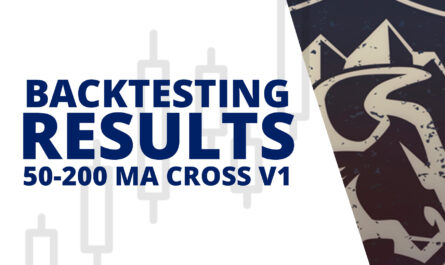Inflation profoundly impacts the economy, affecting various socio-economic groups in different ways. Over the past four years, inflation has notably affected the middle class, significantly changing their economic status and lifestyle.
Inflation has wreaked havoc on the middle class over the past four years, eroding their purchasing power, diminishing their savings, and making essential goods and services increasingly unaffordable.
This insidious economic phenomenon has left many middle-class families struggling to maintain their standard of living, as rising prices outpace wage growth and the value of their stock and bond investments deteriorates when adjusted for the inflation rate.
The impact of inflation on the middle class is far-reaching, affecting crucial aspects of their lives, such as housing, healthcare, and overall financial security. In this article, we will explore how inflation has destroyed the middle class, exploring its challenges and potential implications for policymakers seeking to address this pressing issue.
Let’s explore how inflation has impacted the middle class, focusing on critical areas such as purchasing power, savings, and access to housing and healthcare.
How Is Inflation Affecting the Middle Class?
Here are the areas where inflation is directly hurting the middle class economically:
- Purchasing Power: Inflation eroded the purchasing power of the middle class, making it harder to maintain their standard of living.
- Wages vs. Prices: Rising prices outpaced wage increases, leading to stagnant or declining real incomes.
- Savings: Savings held in traditional accounts lost value due to low interest rates compared to inflation.
- Investments: Fixed-income investments lost value in real terms, hindering wealth accumulation.
- Housing Affordability: In the past four years, rising housing prices and interest rates have made homeownership increasingly unaffordable for the middle class trying to buy a home.
- Healthcare Costs: Surging healthcare costs significantly burden middle-class families, even those with insurance.
- Financial Strain: The combination of these factors contributed to the financial strain experienced by the middle class.
- Policy Implications: Policymakers must prioritize measures to alleviate the impact of inflation on the middle class to ensure economic stability and prosperity.
Let’s look into each area more deeply.
Purchasing Power
One of the most direct ways inflation impacts the middle class is by lowering the purchasing power of their paycheck. As prices for goods and services rise, the same amount of money buys less than it did before. This effect is particularly pronounced for the middle class, whose income may not increase at the same rate as inflation.
This discrepancy means that even if nominal wages rise, middle-class families’ real income (income adjusted for inflation) may stagnate. Consequently, middle-class families find it increasingly difficult to maintain their standard of living, as their expenses for essentials like food, transportation, and utilities consume a more significant portion of their income.
If your annual raise doesn’t equal the year-over-year rate of inflation, then you will get a pay cut. The inflation rate has been different across many categories, like housing, food, and energy, so the decrease in spending power is different for each item, some far worse than others.
Savings and Investments
Inflation also affects the middle class’s ability to save and invest. Savings held in traditional savings accounts may earn interest at rates below the inflation rate, leading to a decrease in the actual value of these savings over time.
For middle-class families, this diminishes their financial security and reduces their ability to plan for future expenses, such as education or retirement. Investments in bonds or other fixed-income securities can similarly lose value in real terms, making it harder for the middle class to build wealth over time.
If your interest and return rates are more significant than the inflation rates, then you are losing purchasing power with your savings and investments.
Housing
The housing market is another area where inflation has significantly impacted the middle class. In many regions, housing prices have risen faster than the overall inflation rate, making homeownership increasingly unaffordable for middle-class families trying to buy homes.
Those who own homes may benefit from increased home values, but higher property taxes and maintenance costs often offset this. For those looking to buy, high prices and rising interest rates (a standard tool used to combat inflation) can put homeownership out of reach, forcing middle-class families to allocate a more significant portion of their income to housing or to delay or forego homeownership altogether.
Healthcare
Healthcare costs have also risen sharply, outpacing general inflation in many cases. For the middle class, this means that even with health insurance, the out-of-pocket costs for medical care can be burdensome.
High deductibles, copayments, and premiums consume a significant portion of middle-class incomes, reducing their ability to spend on other necessities or save for the future. In some cases, the high cost of healthcare can lead to significant debt or even bankruptcy for middle-class families.
Key Takeaways
- Inflation has eroded the purchasing power of the middle class, making it harder to maintain their standard of living.
- Rising prices have outpaced wage increases, leading to stagnant or declining real incomes for middle-class families.
- Savings held in traditional accounts may lose value due to interest rates below the inflation rate, reducing financial security.
- Investments in fixed-income securities can also lose value in real terms, hindering wealth accumulation.
- New homeownership has become increasingly unaffordable for the middle class due to rising housing prices and interest rates.
- Healthcare costs have surged, placing a significant financial burden on middle-class families, even those with insurance.
Conclusion
The relentless march of inflation over the past four years has dealt a severe blow to the economic well-being of the middle class. Escalating costs for essential goods and services and sluggish wage growth have left many families struggling to keep pace with their previous standard of living.
The erosion of purchasing power, diminished returns on savings and investments, increasingly unattainable housing, and burdensome healthcare expenses have collectively contributed to the financial strain experienced by this vital segment of society.
As policymakers grapple with the challenges posed by inflation, they must prioritize measures to alleviate its impact and safeguard the future of the middle class, ensuring the long-term stability and prosperity of the economy in the face of the destructive forces of inflation that have devastated the middle class.
#Inflation #Destroyed #Middle #Class



